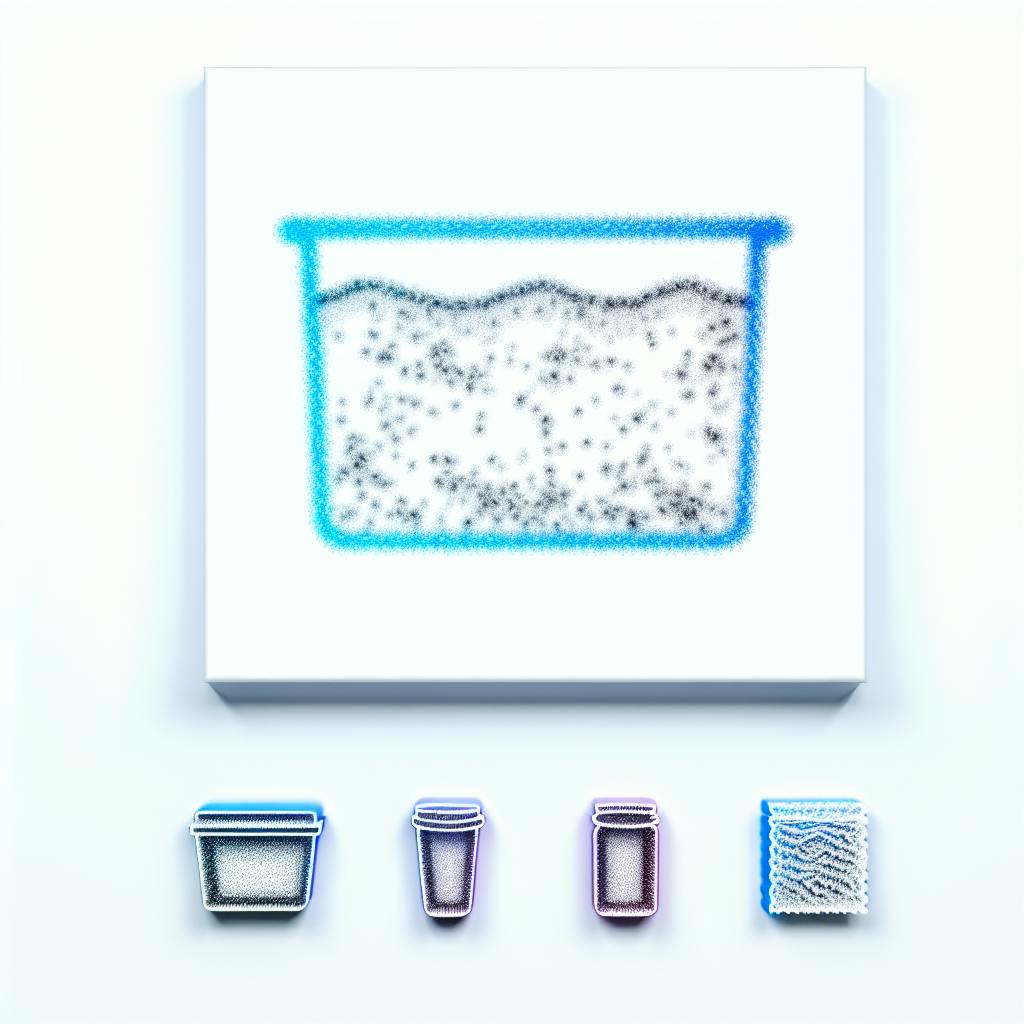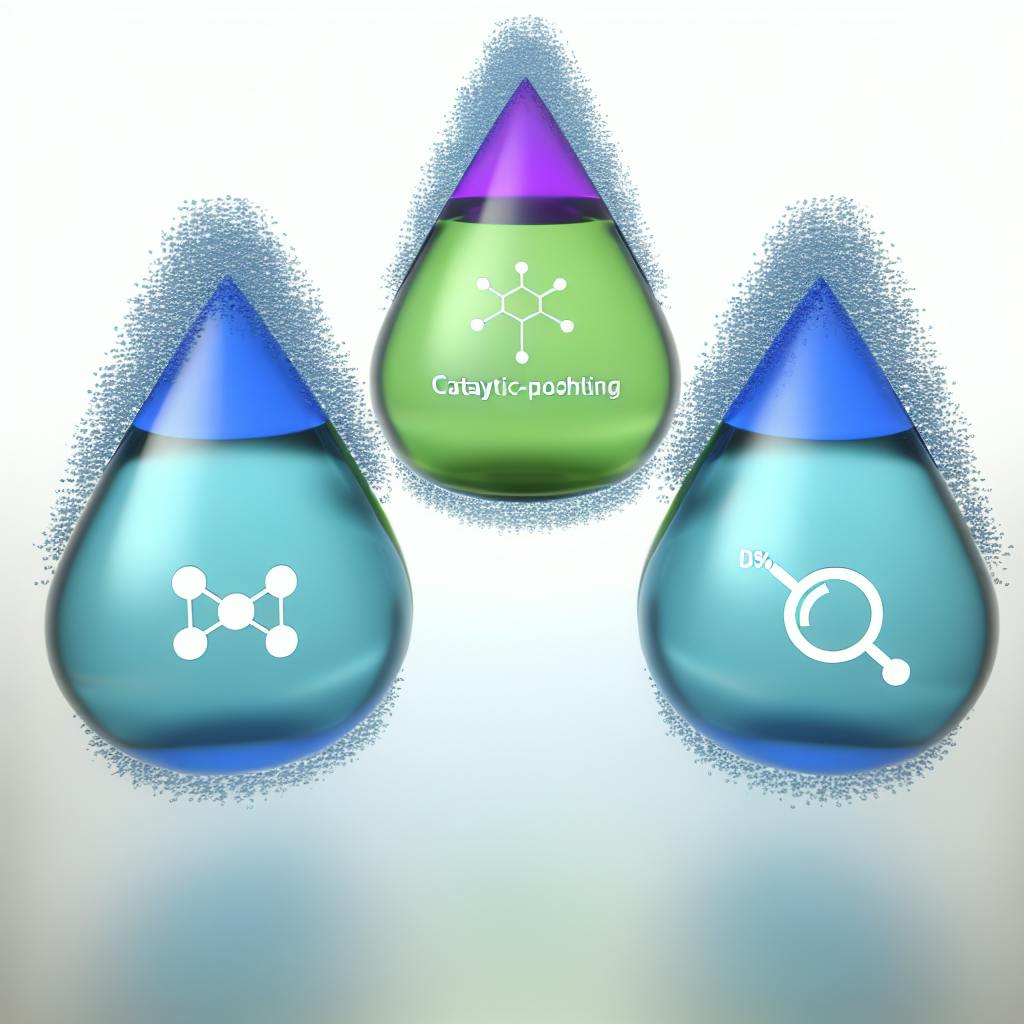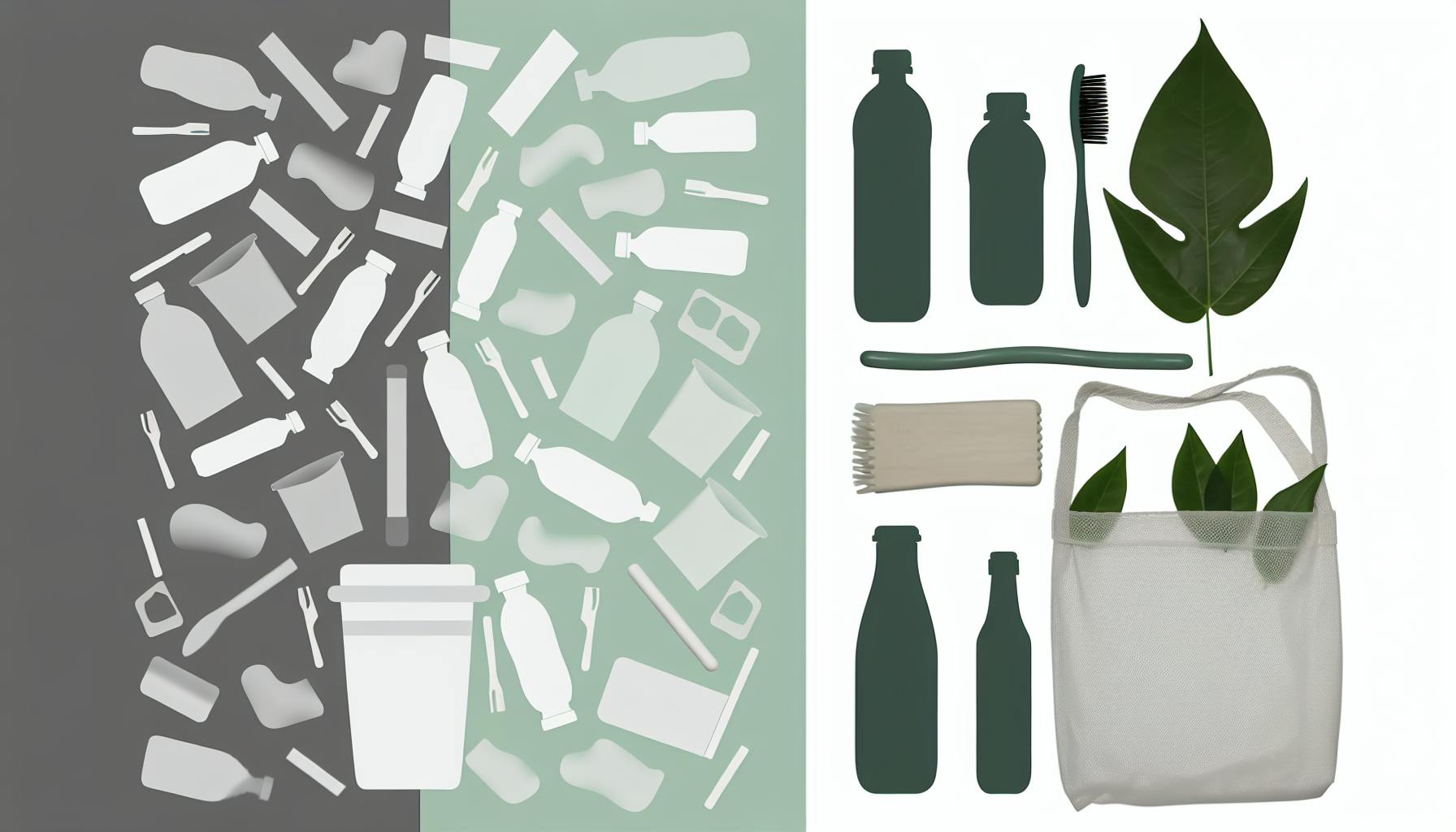Microplastic pollution poses a significant threat to marine ecosystems and aquatic life. These tiny plastic particles can accumulate contaminants and be ingested by various species, leading to potential health issues. To monitor and mitigate microplastic pollution, researchers rely on bioindicator species that can accumulate microplastics and indicate environmental changes.
Here are five marine species that serve as effective bioindicators of microplastic pollution:
-
Red Swamp Crayfish - Found in freshwater ecosystems, these crayfish accumulate microplastics in their digestive tracts, reflecting the presence of microplastics in their environment.
-
Zebra Mussels - As filter feeders, zebra mussels accumulate microplastics in their bodies, making them valuable indicators of microplastic pollution in freshwater lakes.
-
Clams - Clams, both in freshwater and coastal areas, ingest and accumulate microplastics, signaling broader environmental issues related to microplastic pollution.
-
Mussels - Similar to clams, mussels can accumulate microplastics in their tissues, reflecting the quality of the water they inhabit and the presence of microplastic pollution.
-
Marine Turtles - Every sea turtle has microplastics in its body, ingesting up to 104 pieces of plastic. Their microplastic ingestion indicates pollution levels in coastal waters, estuaries, and open oceans.
By studying these bioindicator species, researchers can gain insights into the prevalence and effects of microplastics in various aquatic ecosystems, informing strategies for environmental conservation and policy-making.
| Species | Habitat | Microplastic Accumulation |
|---|---|---|
| Red Swamp Crayfish | Freshwater | Digestive tract |
| Zebra Mussels | Freshwater lakes | Body tissues |
| Clams | Freshwater and coastal | Body tissues |
| Mussels | Coastal and estuaries | Body tissues |
| Marine Turtles | Oceans and coastal | Ingestion |
How Are Marine Bioindicators Chosen?
Selecting marine species as bioindicators for microplastic pollution involves evaluating their ability to accumulate microplastics, indicate environmental changes, and be applicable in various ecosystems for monitoring purposes. Several factors are considered when choosing a bioindicator species, including:
- Distribution: Are they found in different ecosystems?
- Consumption by humans: Are they consumed by humans, making them a good indicator of human exposure?
- Accessibility for sampling: Are they easy to collect and study?
The ideal bioindicator species should be easy to sample, impacted by plastic pollution, and able to reveal changes in plastic pollution over time.
Evaluation Criteria
The selection process involves evaluating species based on specific criteria, including:
| Criteria | Description |
|---|---|
| Habitat | Where do they live? |
| Feeding behavior | What do they eat? |
| Microplastic accumulation | Can they accumulate microplastics in their tissues? |
For example, species that ingest microplastics, such as sea turtles and fish, can provide information on the presence of plastic debris in the ocean. On the other hand, species that filter feed, such as mussels and oysters, can accumulate microplastics in their tissues, making them useful bioindicators of microplastic pollution.
Combining Bioindicators
A combination of multiple bioindicator species is often used to provide a more comprehensive understanding of microplastic pollution in different ecosystems. This approach helps to identify areas with high levels of microplastic pollution and track changes in pollution over time. By selecting the right bioindicator species, researchers can develop effective monitoring plans to assess the impact of microplastic pollution on marine ecosystems and inform strategies for mitigation and management.
1. Red Swamp Crayfish
Microplastic Accumulation Capability
Red swamp crayfish (Procambarus clarkii) can accumulate microplastics in their digestive tracts. A 2023 study published in Ecological Indicators found that the same types of microplastics were present in P. clarkii and abiotic compartments like water and sediment.
Indicator of Environmental Changes
The accumulation of microplastics in red swamp crayfish can indicate environmental changes in freshwater ecosystems. The study showed that the same microplastic items were found in all three assessments, making red swamp crayfish a good indicator of microplastic pollution.
Applicability in Various Ecosystems
Red swamp crayfish are found in lentic freshwater ecosystems, making them suitable for monitoring microplastic pollution in these ecosystems. The study's results suggest that red swamp crayfish can provide valuable insights into the impact of microplastic pollution on freshwater ecosystems.
Factors to Consider
| Factor | Description |
|---|---|
| Feeding habits | Smaller red swamp crayfish tend to have a higher accumulation of microplastics in their digestive tracts. |
| Body size | Larger crayfish may not be as effective at indicating microplastic pollution. |
By considering these factors, researchers can select the most effective bioindicator species for monitoring microplastic pollution in freshwater ecosystems.
2. Zebra Mussels
Microplastic Accumulation Capability
Zebra mussels (Dreissena polymorpha) can accumulate microplastics in their bodies. A study found that zebra mussel samples contained microplastics, with the most common color being black. The dominant polymer shape was fiber, and the main polymer type was polypropylene. The common size range was 1001-2000 µm.
Indicator of Environmental Changes
Zebra mussels can indicate environmental changes in freshwater ecosystems. As powerful filter feeders, they can improve water clarity, which can reshape the entire ecosystem. However, their invasion can also impact the aquatic system.
Applicability in Various Ecosystems
Zebra mussels are found in large freshwater lakes and can be used to monitor microplastic pollution in these ecosystems. Their ability to accumulate microplastics makes them a valuable bioindicator species.
Factors to Consider
| Factor | Description |
|---|---|
| Invasive species | Zebra mussels can impact the aquatic system by blocking water flow. |
| Filter feeding | They can improve water clarity, reshaping the ecosystem. |
3. Clams
Microplastic Accumulation Capability
Clams can accumulate microplastics in their bodies. Studies have shown that Asian clams in freshwater ecosystems ingest microplastics, which are then transported to other parts of their bodies. Another study found that clams in southern Brazil contained high concentrations of microplastics, mainly composed of polyamide, polyethylene, and polyethylene terephthalate. The microplastics were mostly small, fibrous, and colorless.
Indicator of Environmental Changes
Clams can indicate environmental changes in aquatic ecosystems. As filter feeders, they reflect the quality of the water they inhabit. Changes in clam populations or the presence of microplastics in their bodies can signal broader environmental issues.
Applicability in Various Ecosystems
Clams can be used to monitor microplastic pollution in various ecosystems, including freshwater lakes, rivers, and coastal areas. Their ability to accumulate microplastics makes them a valuable bioindicator species.
| Factor | Description |
|---|---|
| Filter feeding | Clams reflect the quality of the water they inhabit. |
| Microplastic accumulation | Clams accumulate microplastics in their bodies, making them a valuable bioindicator species. |
sbb-itb-1dc3f59
4. Mussels
Microplastic Accumulation Capability
Mussels are effective bioindicators of microplastic pollution because they can accumulate microplastics in their bodies. Studies have shown that mussels ingest microplastics, which are then stored in their tissues. For example, a study found that mussels from around the world contain microplastics, with varying levels of abundance. Another study demonstrated that the amount of microplastics in mussels is closely related to human activity.
Indicator of Environmental Changes
Mussels can indicate environmental changes in aquatic ecosystems. As filter feeders, they reflect the quality of the water they inhabit. Changes in mussel populations or the presence of microplastics in their bodies can signal broader environmental issues.
Applicability in Various Ecosystems
Mussels can be used to monitor microplastic pollution in various ecosystems, including coastal waters, estuaries, and freshwater lakes. Their ability to accumulate microplastics makes them a valuable bioindicator species.
| Factor | Description |
|---|---|
| Filter feeding | Mussels reflect the quality of the water they inhabit. |
| Microplastic accumulation | Mussels accumulate microplastics in their bodies, making them a valuable bioindicator species. |
| Wide distribution | Mussels can be found in various ecosystems, including coastal waters, estuaries, and freshwater lakes. |
5. Marine Turtles
Microplastic Accumulation Capability
Marine turtles are effective indicators of microplastic pollution because they ingest microplastics. Studies have found that every single sea turtle has microplastics in their body, with some individuals consuming up to 104 pieces of plastic. These microplastics come from various sources, including the breakdown of larger plastic items, cigarette filters, clothes, and fishing nets.
Indicator of Environmental Changes
Marine turtles indicate environmental changes in aquatic ecosystems. When they ingest microplastics, they introduce toxins into their bodies, potentially leading to health issues. The presence of microplastics in sea turtle nests also alters the sand's thermal properties, potentially affecting the sex ratio of sea turtle populations.
Applicability in Various Ecosystems
Marine turtles can be used to monitor microplastic pollution in various ecosystems, including coastal waters, estuaries, and open oceans. Their ability to accumulate microplastics makes them a valuable indicator species, reflecting the quality of the water they inhabit.
| Factor | Description |
|---|---|
| Microplastic ingestion | Marine turtles ingest microplastics, introducing toxins into their bodies. |
| Environmental indicator | Marine turtles indicate environmental changes in aquatic ecosystems. |
| Wide distribution | Marine turtles are found in various ecosystems, including coastal waters, estuaries, and open oceans. |
Summary
The five marine species discussed in this article – red swamp crayfish, zebra mussels, clams, mussels, and marine turtles – are effective bioindicators of microplastic pollution. By studying these organisms, researchers can gain valuable insights into the prevalence and effects of microplastics in marine and freshwater ecosystems.
Key Characteristics
These species have been chosen due to their ability to:
- Accumulate microplastics
- Indicate environmental changes in aquatic ecosystems
- Be found in various ecosystems, making them ideal for monitoring microplastic pollution
Importance of Bioindicators
Bioindicators like these five species play a crucial role in environmental conservation efforts. By monitoring microplastic pollution, researchers can:
- Gain a better understanding of the impact of microplastics on marine and freshwater ecosystems
- Develop effective strategies for mitigating and managing microplastic pollution
- Inform policies and practices that protect the environment and human health
FAQs
What species are most affected by microplastics?
Microplastic pollution affects many marine species, but some are more vulnerable than others. Species like seabirds, sea turtles, toothed whales, and crabs are often affected by microplastic ingestion.
| Species | Effect of Microplastic Ingestion |
|---|---|
| Seabirds | Over a million seabirds die each year from ingesting plastic debris. |
| Sea Turtles | Sea turtles often mistake plastic bags for jellyfish, which can lead to fatal consequences. |
| Toothed Whales | Microplastics can harm toothed whales and other marine mammals. |
| Crabs | Crabs are also affected by microplastic ingestion, which can harm their health. |
By studying these species, researchers can gain insights into the impact of microplastics on marine ecosystems and develop effective strategies for mitigation and management.


